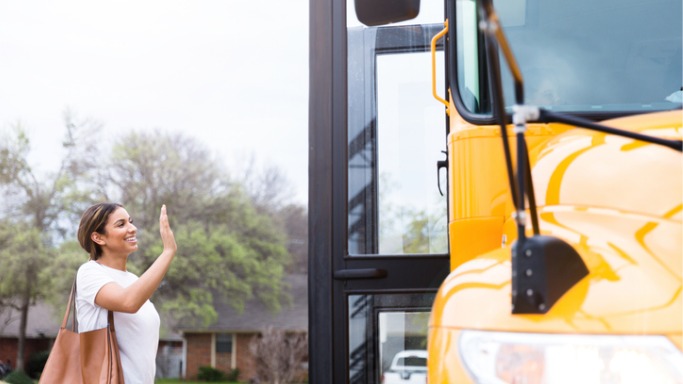In most of our country, geography dictates which K-12 public school a child will attend. Disregarding school performance and parental input, students are assigned a school based on the geographical boundaries of the school district in which they live.
Consequently, parents who aren’t able to move to a different neighborhood, can’t afford tuition for an alternative learning avenue or don’t have the flexibility to provide home schooling are at the mercy of these geographical lines.
No other learning avenues outside the K-12 public system restrict families from choosing their school. Preschool and higher education invite admissions from individuals regardless of their ZIP code. The same is true of K-12 private schools.
Likewise, boundaries do not shackle families in selecting many other government-funded resources. For example, parents have wide latitude in selecting the public library, park and pool they use. And children are not restricted from receiving medical care at a public hospital because they don’t live in a certain ZIP code.
Having strict rules connecting a child’s address with the public school the individual is eligible to attend also drives a large disparity in funding among schools. Since residential taxes contribute to public school funding, the quality of a public school is typically linked with home prices in the neighborhood. In poorer areas where homes cost less, less money is collected for public schools. In more affluent areas with higher home prices, more tax revenue is produced to fund the local public school.
This is not to say that money is the solution for improving K-12 public education in our country. More money has repeatedly proved not to translate to improved learning. All too often, a significant and growing percentage of public school funds go toward bureaucracy instead of learning.
Schools with significantly less money per student, however, have a limited ability to offer students expanded academic offerings, student learning support, co-curricular learning opportunities, technology and facilities.
Arizona has been a pioneer in breaking down barriers for K-12 students. In 1994, the state passed an open enrollment law that provided unrestricted access for families to select any public school in the state. No longer did a student have to reside within the district’s boundaries to qualify for enrollment.
This open enrollment policy means students are no longer trapped in failing schools. And competition among schools in a free market boosts school quality — just as in the business world, schools either meet the demand for quality education to retain customers or cease to exist.
Only 11 states have some type of open enrollment mandatory law in place. Yet a mere five states — Arizona, Colorado, Delaware, Florida and Utah — require both cross-district and within-district open enrollment allowances. The remaining 45 states should follow suit.
In July 2022, Arizona took education freedom to a new level, signing universal education savings accounts into law. The state-funded ESAs empowered families to select any educational avenue within the state, either within or outside the public system. Iowa and Utah have followed Arizona’s lead, with several more hoping to join within the year.
In his eighth and final State of the State address in January 2022, Arizona Gov. Doug Ducey captured the significance of the landmark legislation: “Fifty-plus years ago, politicians stood in the schoolhouse door and wouldn’t let minorities in; today, union-backed politicians stand in the schoolhouse door and won’t let minorities out. Many of our poor kids and children of color are trapped in a failing school. It’s time to set these families free.”
The bottom line is this: Students should not be bound to a low-performing school but allowed to attend any school that best fits their learning needs. The opportunity to succeed must be extended to all students, not just those living in a neighborhood with a quality public school or those whose parents have the means to secure education outside the public system. Too many students are trapped in failing public schools simply because of where they live.
Open enrollment has been overlooked for far too long. Parents everywhere should demand that this much-needed legislation be passed.
Not only will this advance the education of children, but it will also benefit the overall economic and societal health of states.
It’s time to stop dictating where children go to school.

